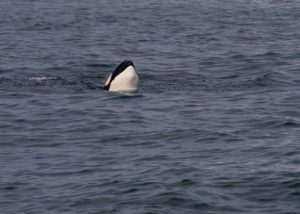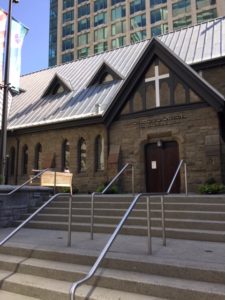Margaret is quoted in an article, “Faith and science communities join forces to change the world” (November 10, 2018)
Author Archives: mbj
Margaret is quoted in an article about science and faith coming together on Cape Cod to tackle the climate crisis, “Sandwich forum focuses on spiritual collaboration in efforts to fight global warming” (November 4, 2018)
All Saints: On being good ancestors
Back in 1982, Alice Walker wrote a marvelous novel, The Color Purple. Maybe you remember it. It was greeted with critical acclaim, won a Pulitzer, and was eventually made into a movie. What interests me today is that soon after writing The Color Purple, Alice Walker began to dream about her ancestors. Some of these dream-visits were from people she had known before they died. Others were from people who had lived and died before she was born. People she knew nothing about began to visit her in her dreams. One night, she says, “a long line of ancestors… all apparently slaves, field workers, and domestics,” came to visit her, each one bringing some wisdom or words of support, or sometimes just a hug. When she woke up the next morning, Alice Walker could still feel the plump hand of one of these visitors, “a dark, heavy-set woman who worked in the fields,” gently but firmly holding her own. Alice Walker goes on to say, “I get to keep these dreams for what they mean to me, and I can tell you that I wake up smiling, or crying happily… It seems very simple: Because they know I love them and understand their language, the old ones speak to me… I feel that [this dream is] not so much my dream as ours [and in it I feel sustained forever]… Since this dream I have come to believe that only if I am banned from the presence of the ancestors will I know true grief.”1
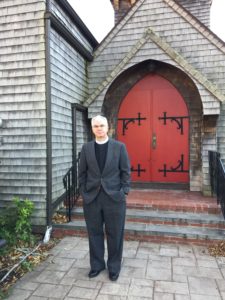

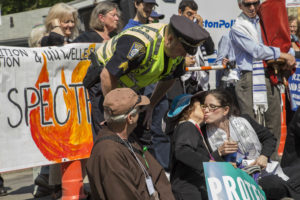
1. Alice Walker, “Coming in From the Cold,” Living By the Word (San Diego: Harcourt Brace Janovich, 1988), pp. 67-68. 2. Quoting Eban Goodstein, Director, Bard Center for Environmental Policy, speaking at UMass, Amherst in 2007.
This essay is based on opening remarks by the Rev. Dr. Margaret Bullitt-Jonas at a Community Forum, “Tackling the climate crisis now,” held at St. John’s Episcopal Church, Sandwich, MA, on November 4, 2018. The other speakers were Dr. Philip B. Duffy (President and Executive Director, Woods Hole Research Center) and the Rev. Dr. Paul Minus (Co-Chair of the Cape & Island Faith Communities Environmental Network). The event was part of a new initiative in Massachusetts to bring together scientists and faith leaders in a shared effort to address the climate crisis.
I brought two props with me: a globe and an icon. The globe represents the world outside us: the precious living planet into which we were born, with its complex eco-systems, its lands and waters, its diverse multitude of creatures, and its delicate balance of gases that make up the global atmosphere. The globe represents the outer landscape – what science studies.
The icon represents the world we carry inside us: how we make meaning, what we value and consider important, what motivates us, what we feel, what we long for, how we choose to act. The icon represents the inner landscape – what religion explores.
![]() Scientists have done their job – they’ve conducted research, carried out experiments – and now they are speaking with increasing alarm about threats to the web of life and to human civilization. In the last few weeks we’ve experienced a one-two punch. The World Wildlife Fund just reported that 60% of mammals, birds, fish and reptiles have been wiped out since 1970. This massive annihilation of wildlife now threatens human civilization, which depends on a healthy natural world. And several weeks ago the U.N.’s Intergovernmental Panel on Climate Change released a major report that shows that planetary warming is well underway and that time is running out to avert climate catastrophe: we have maybe ten or twelve years. To avoid runaway climate change will require a radical transformation of society from top to bottom at a scale and pace that are historically unprecedented: never before in human history has our species changed its way of living that dramatically and that fast.
Scientists have done their job – they’ve conducted research, carried out experiments – and now they are speaking with increasing alarm about threats to the web of life and to human civilization. In the last few weeks we’ve experienced a one-two punch. The World Wildlife Fund just reported that 60% of mammals, birds, fish and reptiles have been wiped out since 1970. This massive annihilation of wildlife now threatens human civilization, which depends on a healthy natural world. And several weeks ago the U.N.’s Intergovernmental Panel on Climate Change released a major report that shows that planetary warming is well underway and that time is running out to avert climate catastrophe: we have maybe ten or twelve years. To avoid runaway climate change will require a radical transformation of society from top to bottom at a scale and pace that are historically unprecedented: never before in human history has our species changed its way of living that dramatically and that fast.
The question is how we will respond. This is where communities of faith have a vital role to play. In order to mobilize an effective response to the climate crisis, we need hard science and we need deep faith; we need facts and we need a moral compass; we need clear heads and we need open hearts.
We need the wisdom of our whole selves, and we need the help and skills of every sector of society if we are going to preserve a habitable planet for our children’s children.
I’d like to name four of the many roles that faith communities can play:
1) Address helplessness
People who are secretly worried about climate change often don’t take action because they feel helpless and overwhelmed. It’s easy to shut down, throw up our hands and call it quits. “It’s too late,” we tell ourselves. “What difference can I make? It’s not my problem. Someone else will have to deal with it. Besides, the world is cooked. We’re done for. I might as well put my head down, go shopping, check the score, grab a beer.” It’s easy to collapse into fatalism or despair. Strictly speaking we may not be climate skeptics – we do respect climate science, we do understand that burning fossil fuels is disrupting the global climate and threatening the whole human enterprise – but most of us engage in a kind of everyday climate denial: we don’t want to talk about it, we don’t want to think about it, we don’t know what to do about it, and we surely don’t want to feel the emotions that this crisis evokes.
Faith communities address helplessness in many ways. When we gather for meditation or worship, we see each other’s faces, we hear each other’s voices, and we can take hold of each other’s hands. We feel the power of a community that longs, as we do, to create a better world. And we place ourselves in the presence of a Higher Power (Great Spirit, God, Creator) in whose presence we are uplifted and to whom we are accountable.
2) Offer rituals and practices of prayer and meditation that transform minds and hearts and set us on a good path
Taking action is essential, but in order to discover what we are called to do – and to find the strength to do it – we need to open ourselves to a power and wisdom that is greater than our own. We need help. We need guidance.
In a time of climate crisis, we need rituals that address our fear of death and give us courage to trust in a life greater than death. We need rituals that ask us to name our guilt and regrets, that grant us forgiveness, and that give us strength to set a new course. We need rituals that remind us of our essential connection with each other, with the rest of the created world, and with the unseen Source of all that is. We need rituals that remind us of how loved we are, how precious the world is, and what a privilege it is to be born in a time when our choices and actions make such a difference.
We also need to meditate and pray, recognizing, in the words of Terry Tempest Williams, “that we exist by the grace of something beyond ourselves.” What we consider prayer can take many forms. In times like these, our prayer may need to be expressive and embodied, visceral and vocal. How shall we pray with our immense anger and grief? How do we pray about ecocide, about the death that humanity is unleashing upon Mother Earth – and upon ourselves? The climate crisis can make us go numb. But it is important to protect our human capacity to feel our emotional responses to the crisis, for that is how we stay inwardly vital and alive. What’s more, our emotions can become a source of energy for constructive action to address the emergency.
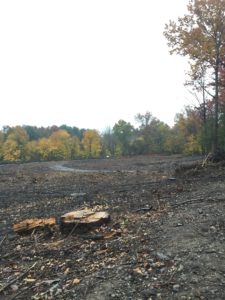
So I’ll tell a story. Over the past month a company has been cutting down trees in the woods behind our house, clearing space for a new co-housing development. I’m all for co-housing, and I’ve met some nice people who plan to live there, but, honestly, I grieve the trees. So I’ve taken to praying outdoors. I go outside, feel my feet on the good earth, feel the wind on my face, and I sing to the trees. I sing my grief to the trees that are going down, and my grief about so much more: about what we have lost and are losing and are likely to lose, making up the words and the music as I go along. I sing my rage about these beautiful old trees going down and about the predicament we’re in as a species, my protest of the political and corporate powers-that-be that drive forward relentlessly with business as usual, cutting down forests, drilling for more oil and fracked gas, digging for more coal, expanding pipeline construction, and opening up public lands and waters to endless exploitation, as if the Earth were their private business and they were conducting a liquidation sale. I sing out my shame to the trees, my repentance and apology for the part I have played in Earth’s destruction. I sing out my thanks, my praise for the beauty of trees and my resolve not to let a day go by that I don’t celebrate the preciousness of the living world of which we are so blessedly a part.
Our prayer may be noisy and expressive, or it may be very quiet, the kind of prayer that depends on listening in stillness and silence with complete attention: listening to the crickets as they pulse at night, listening to the rain as it falls, listening to our breath as we breathe God in and breathe God out, listening to the inner voice of love that is always sounding in our heart.
Experiencing our unshakable union with a love that is stronger than death guides us to actions commensurate with the emergency we are in.
3) Provide moral leadership
Climate change is obviously a scientific issue, an economic issue, a political issue, but it is also a moral issue, an issue of justice. The poorest nations and the poorest citizens in each nation are those most vulnerable to climate change, because of flooding, food shortages, and the loss of clean water. The front-line communities most affected by fossil fuel pollution are often low-income communities and communities of color.1 The poor are often the people least responsible for causing climate change, the people least equipped to protect themselves from its effects, and the people least likely to have a say in how decisions get made. Pope Francis’s landmark encyclical, Laudato Si, makes it crystal clear that healing the climate is closely connected with securing social justice, racial justice, environmental justice, and economic justice. And climate change is about intergenerational justice, too, for right now we are stealing a habitable Earth from our children. What is our moral responsibility to future generations? This weekend, Christians around the world are celebrating All Saints Day, and as I said in my sermon this morning, our task is to be a good ancestor.
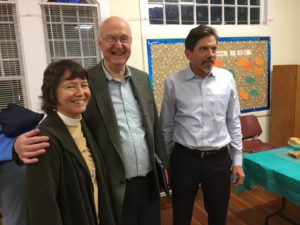
4) Inspire bold action
Faith communities have a long history of leading movements for social and environmental justice, from child labor to women’s rights, peace, the abolition of slavery, and the civil rights movement. Faith communities tap into our capacity to dedicate ourselves to a cause that is greater than our personal comfort and self-interest. Faith in God (however we name that Higher Power) can inspire people to take bold actions that require courage, compassion, and creativity.
I’d like to mention one important new interfaith initiative: Living the Change. At LivingtheChange.net you can commit to making personal changes in the three key areas that most affect our personal carbon footprint: transportation, household energy use, and diet. (It turns out that eating less meat or no meat, and shifting to a plant-based diet, is one of the most climate-friendly things we can do.)
Faith communities can model best practices for “going green,” such as to get an energy audit, increase energy conservation and efficiency, look into installing solar panels, put in bike racks, replace lawns with community gardens, and so on. But taking care of our immediate buildings and community is just a start. An adequate response to the scope and speed of the climate crisis requires collective action and political engagement.
The climate emergency is propelling people of different faiths to lobby for strong legislative action, such as putting a fair and rising price on carbon, and to join the divestment movement. In the footsteps of Gandhi and Martin Luther King, Jr., countless people of faith have been arrested in recent years in acts of non-violent resistance to fossil fuels. I have been arrested several times in interfaith protests against fossil fuels, and I consider those experiences some of the high points of my life. By engaging in civil disobedience, faith communities challenge the deathly status quo of “business as usual” and rouse society out of its apathy and inaction.
I am thankful for people who are willing to face squarely the most challenging, even devastating facts; who reach into their reserves of courage, faith, and hope; and who step out to take action — even if success is not assured — bearing witness to the presence and power of a love that abides within and around us and that nothing can destroy.
1. See: Wen Stephenson, “The Grassroots Battle Against Big Oil,” The Nation, October 28, 2013.
Margaret is quoted in an article about the crowds who gathered at a synagogue in Northampton, MA to honor the 11 victims of the shooting in Pittsburgh, PA (Oct. 30, 2018)
This piece is based on remarks I made to the 117th Diocesan Convention of the Episcopal Diocese of Western Massachusetts, asking delegates to pass a resolution entitled “Creation Care in Our Congregations: Living Lightly on God’s Good Earth.” The resolution was created in response to the 79th General Convention, which affirmed the Episcopal Church’s intention, “in the spirit of the Paris Climate Accord,” to make “intentional decisions about living lightly and gently on God’s good earth.” Among other things, the resolution calls on all parishes in the diocese to create a Green Team and to undertake an energy audit. To download the resolution, click here.
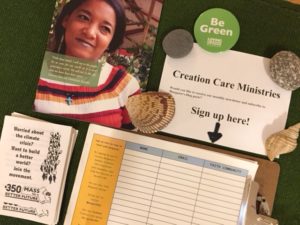
I am grateful that the Episcopal Church has named Creation Care as one of the three centerpieces of its attention for the next several years.
You are probably aware of the report issued a few weeks ago by the U.N.’s Intergovernmental Panel on Climate Change. The IPCC report made it clear that planetary warming is well underway, that it is taking place more rapidly and with more extreme effects than scientific models predicted, and that time is running out to avert climate catastrophe.
To stabilize climate change at a 1.5 degree Celsius rise above average global temperatures in pre-industrial times, society worldwide will have to undergo a radical transformation. The IPCC notes that the scale of change that is required to cap global warming at 1.5 degrees is historically unprecedented: never before in human history has our species changed its way of living that dramatically and that fast.
What I want to say is that this is the moment for which the Church was born. We were made for this challenge.
Why?
• Because we put our faith and trust in a God who creates and loves every inch of creation (Genesis 1:1-31);
• Because we put our faith and trust in Jesus Christ, who shares the pain and promise of the human predicament, shows us the path of life, and insists that life and not death will have the last word (John 10:10);
• Because we put our faith and trust in the Holy Spirit, who renews the face of the earth (Psalm 104:31).
I was touched by Bishop Doug Fisher’s convention address, especially his reflection on the power of turning from an old way of living to something new. He mentioned that St. Paul uses the phrase “but now” twenty-seven times in his Letters, as in: “For once you were in darkness, but now in the Lord you are light” (Ephesians 5:8). Once you were in darkness, but now you are light. Once you were dead, but now you are alive. Once you were far from God, but now you are near.
I started playing with that image of turning, and maybe we’re ready to say something like this: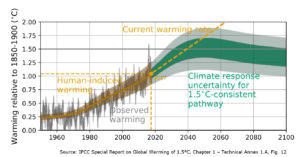
“Once I took nature for granted as something to ignore or exploit, BUT NOW I understand that I must live more gently and mindfully on the earth.”
“Once I thought that climate change was someone else’s problem, BUT NOW I see that everyone must get involved.”
“Once I thought that I could keep going with business as usual and live my life as I please, BUT NOW I understand that business as usual is wrecking the planet and that we must change course fast.”
“Once I depended on fossil fuels, BUT NOW I’ll move as fast as I can to a low-carbon life and do everything in my power to help society make that turn with me.”
The IPCC report tells us that as a global community, we have only 10 or 12 years in which to make that turn. We want to give our children and our children’s children a habitable world. So let’s make a start. I move that we pass this resolution.
I am glad and grateful that our diocesan convention voted to pass the resolution. I look forward to seeing how we will move ahead quickly in the months ahead to honor the God who is making all things new (Revelation 21:5).
Today’s blog post, which is also on the Bishop’s Blog of the Episcopal Diocese of Western Massachusetts, is co-written by The Rev. Dr. Margaret Bullitt-Jonas and Bishop Doug Fisher. Presiding Bishop Michael Curry is coming to the Diocese of Western Massachusetts on Sunday, October 21, to celebrate an Episcopal revival, with events at 1:00 p.m. in Pittsfield and at 5:00 p.m. in Worcester. Everyone is invited! For more information, visit here. Both revival events will be livestreamed by The Episcopal Church. You can watch the Pittsfield revival livestream here. You can watch the Worcester revival livestream here.

Everyone (and we mean everyone) knows our Presiding Bishop Michael Curry as “the Royal Wedding Preacher.” He certainly touched souls around the world in his inspired message of the transforming power of love. But did you know that five days later he participated in a Vigil at the White House?
The Vigil was a witness that both rejected President Trump’s “America First” policies and urged bringing people of all political parties together for the sake of the common good. The Vigil was a follow-up on a declaration Michael wrote with other faith leaders several months before called “Reclaiming Jesus: A Confession of Faith in a Time of Crisis.”
That document includes the powerful statement: “We reject domination rather than stewardship of the earth’s resources.”
As we gather together this Sunday in Pittsfield and Worcester for an Episcopal revival led by the “oh so much more than a wedding preacher” Michael Curry, let’s look at why this is a time of crisis for God’s creation.
The Earth is reeling under many pressures, from an explosive growth in human population and consumption to species extinction, habitat loss, and resource depletion. But our most urgent concern is how human activity is changing the climate. Our fears were confirmed last week when the U.N.’s Intergovernmental Panel on Climate Change (IPCC), the leading international group that assesses climate change, released a major report. The IPCC report was stark: humanity is on the brink of catastrophe. The only way to prevent global temperatures from rising more than 1.5 degree Celsius – the level that countries around the world have agreed is a safe upper limit for maintaining life as we know it on this planet – is for nations to cut their carbon emissions drastically and rapidly. In just over ten years – by 2030 – the world will need to have cut global emissions in half (45 percent below 2010 levels). To hold global temperatures to 1.5 degree Celsius will require rapid and massive transformation of every level of society. For example, the report calls for a total or near-total phase-out of the burning of coal by 2050.

The task ahead of us is daunting. The world has already warmed 1 degree Celsius from pre-industrial times, and without a massive global effort, the world will warm by 1.5 degrees in as little as 12 years. If we allow global warming to rise by 2 degrees Celsius – to say nothing of allowing business as usual to continue on its present track, which would raise global temperatures by 3.4 degrees by the end of this century – we will live on a planet that is extremely difficult not only to govern, but even to inhabit. The IPCC report warns that there is “no documented historical precedent” for making the sweeping changes in society that would be required in order to hold global temperatures to 1.5 degrees. Yet if we want to prevent massive crop failures and droughts, extreme storms and sea-level rise, and the migration of millions of refugees, and if we want to pass along a habitable world to our children and our children’s children, we need to tackle climate change.
The day of reckoning has come. As St. Paul exhorts, “See, now is the acceptable time; see, now is the day of salvation!” (2 Corinthians 6:2). Today is a good day to put climate denial behind us. Today is a good day to reject the climate denial expressed in White House policies that promote fossil fuels and ignore, downplay, or even accelerate the climate crisis. Today is also a good day to admit our own everyday version of climate denial and to step up our personal efforts to reduce our use of fossil fuels.
What next steps can you take? For starters, does your congregation have a “green team” or “Creation care committee”? Whatever you call it, a team of parishioners concerned about climate change can take the lead in educating and organizing its community. You can download an article about how to start a “green team” here. At diocesan convention, delegates will vote on a resolution that asks every congregation to create a green team or liaison.
Here’s another idea: how about eating less (or no) meat? A new report confirms that shifting to a plant-based diet is one of the most effective actions we can take to reduce our carbon footprint, limit climate change, and allow the Earth to keep feeding the global population.
Michael Curry has made Creation Care one of his three priorities. (Racial Reconciliation and Evangelism are the others.) We have said many times that this Sunday is so much more than great speeches by Michael. It is an opportunity to commit to a revival of our souls, our church, our communities and our world. In a time of crisis, may we passionately recommit to fighting climate change and caring for God’s creation.
+Doug and Margaret+
Margaret’s sermon (October 14, 2018) about the IPCC report, “Ten years to avoid climate catastrophe? What do we do now?” is here.
Ten years to avert climate catastrophe? What do we do now?
“Spiritual beliefs are not something alien from Earth, but rise out of its very soil. Perhaps our first gestures of humility and gratitude were extended to Earth through prayer, the recognition that we exist by the grace of something beyond ourselves. Call it God. Call it Wind. Call it a thousand different names. Corn pollen sprinkled over the nose of a deer. Incense sprinkled from swaying balls held by a priest. Arms folded, head bowed. The fullness we feel after prayer is the acknowledgment that we are not alone in our struggles and sufferings. We can engage in dialogue with the Sacred, with God and each other. A suffering that cannot be shared is a suffering that cannot be endured.” –Terry Tempest Williams, Leap 29 After Jesus had left that place, he passed along the Sea of Galilee, and he went up the mountain, where he sat down. 30 Great crowds came to him, bringing with them the lame, the maimed, the blind, the mute, and many others. They put them at his feet, and he cured them, 31 so that the crowd was amazed when they saw the mute speaking, the maimed whole, the lame walking, and the blind seeing. And they praised the God of Israel. — Gospel of Matthew 15:29-31Today is a good day – a very good day – to be praying and speaking about the natural world. This week the U.N.’s Intergovernmental Panel on Climate Change released a major report about what it will take to keep the earth’s temperature below 1.5 degree Celsius of warming. That’s the level that countries around the world have agreed is a reasonably safe upper limit for maintaining life as we know it on this planet. As one reporter puts it, holding warming to that level would most likely avert “catastrophic climate change like the collapse of rain forests and coral reefs, rapid melting of the ice sheets that would swamp coastal cities around the world and heat extremes that could lead to millions of climate refugees.” The U.N. report makes it clear that to stay within that 1.5 degree boundary of safety, or even within 2 degrees of warming, will require an extraordinary collective effort by human beings worldwide. The only way to avoid hurtling past that threshold is to carry out a “rapid and far-reaching” transformation of human civilization at a magnitude that has never happened before. Such a radical transformation of society has what the report calls “no documented historic precedent,” yet it must be carried out breathtakingly fast: the world has perhaps just over ten years in which to prevent climate catastrophe.
Wouldn’t you know – at the same time that the Intergovernmental Panel on Climate Change issued its report, a monster storm was forming off the Gulf Coast. It quickly grew to a Category 4 hurricane with sustained winds of 155 miles per hour, careened into the Florida Panhandle and then roared across the Carolinas, leaving devastation in its wake. Our hearts go out to the people who lost their lives, homes, and livelihoods to Hurricane Michael, which was supercharged by warming seas, exactly the kind of extreme weather event that is linked to climate change.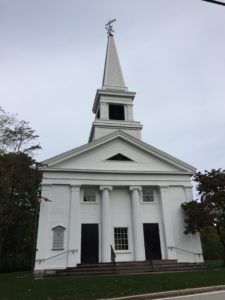
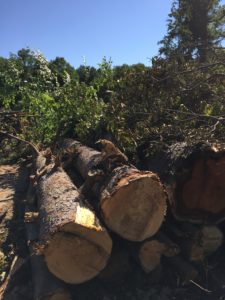
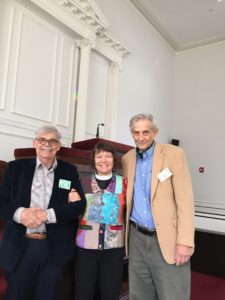
Healing Earth: When the eyes of the blind are opened
Isaiah 35:4-7a Psalm 146 James 2:1-10, 14-17 Mark 7:24-37What a blessing to be with you this morning! Thank you, Jeff for welcoming my husband, Robert Jonas, and me. I serve as Missioner for Creation Care in the Episcopal Diocese of Western Massachusetts and in the United Church of Christ across Massachusetts. I travel from place to place, speaking about our call as followers of Jesus to protect God’s Creation and to re-weave the web of life. (If you want to know more about what I’m up to, you can visit my Website, RevivingCreation.org.) I know that here at Trinity Parish, you have a history of working to protect the living world that God entrusted to our care, and I am deeply thankful for that.
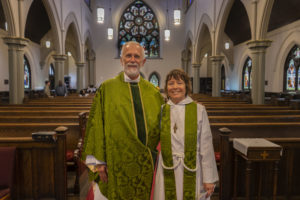

Saving Planet Earth: “Arise, my love, my fair one”
Friends, I feel blessed to be back in Vancouver, to see the mountains again and to ride a bike with my husband around Stanley Park. On our first day we took a boat trip out into the ocean, where we sighted humpback whales the size of a bus, lingering on the surface of the water, rolling, splashing and breaching in the waves. We also encountered a pod of transient orcas, which, as you know, are endangered. One of the orcas rose up out of the water to take a look at our boat, and, to our amazement, it and a second orca swam toward us very slowly and deliberately, right up to the side of the vessel. At the last moment they dove underneath, emerging a little distance behind us. It felt like a greeting, like a blessing, and some of us gasped with astonishment, some of us cheered and some of us were moved to tears. So before I do anything else I want to pass it on to you, that greeting and blessing from our orca kin, as we gather this morning to praise God.
